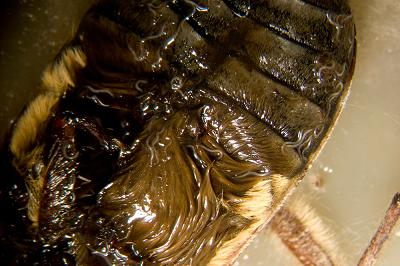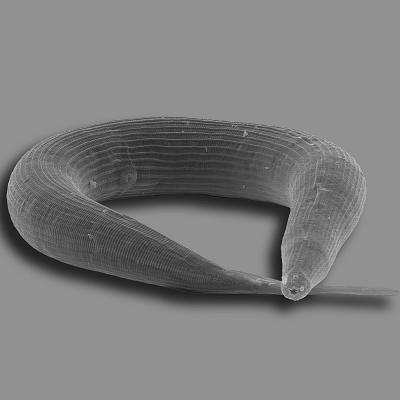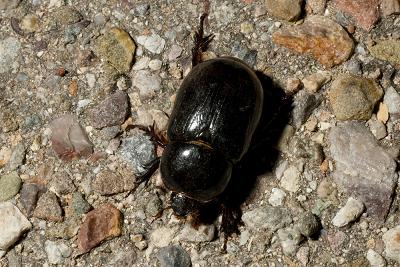The complete genetic code of a parasitic nematode has been deciphered, yielding new insights into the evolution of the phenomenon of parasitism. The genome of those nematodes is surprisingly larger than usual, and includes genes used to break down harmful substances in their habitat

In 1998, the nematode Caenorhabditis elegans won worldwide fame, when it became the first multicellular animal whose genetic code was fully deciphered. Ten years later, in these days, scientists from the Max Planck Institute for Developmental Biology in Germany, in collaboration with researchers from the University of Washington, succeeded in uncovering the genome of another nematode species called Pristionchus pacificus. Nematodes of this species have found a unique existence niche for themselves: they live together with beetles and use them as mobile hosts capable of providing them with food and shelter. After the beetles die, the worms feed on the bacteria and fungi that develop on the beetles' armor.

When the worms move from the soil to the beetles, their habitat changes dramatically. The worms have to protect themselves from various toxins in the host's body, for example. Various researchers have believed for a long time that it is appropriate to study the way in which they defend themselves, since worms can be seen as a 'transitional stage' on the way to full parasitism.
Genome sequencing of P. Pacificus has now confirmed that belief. The genetic code of those worms consists of approximately 170 million bases and contains over 23,500 genes that code for proteins. This is a significant increase in the number of genes compared to other species of worms living in an environment that does not change. C. elegans, for example, which feeds on rotting matter in the soil, has only 20,000 genes that code for proteins. Even the parasitic worms, such as Brugia malayi (Brugia malayi), do not come close to the amount of genes present in the Pacificus.
Why does the pristyochus need such a large number of genes? "The increase in prestyochus is partly attributed to gene duplication," explained Ralph Sommer, the author responsible for the study. "These include several genes that can help break down harmful substances and survive in the beetle's complex environmental system."
Not surprisingly, the Pristyochus boasts a number of genes that are not present in Caenorhabditis elegans. The real surprise comes from the fact that similar genes were discovered in plant parasites, among them genes encoding cellulases - enzymes capable of breaking down the rigid cell wall of plants and various microorganisms. These findings aroused special interest among the researchers, but they are convinced that this is only the tip of the iceberg.

"The really exciting questions aren't here yet," Somer said. "By using the sequencing information [of the genetic code], we will be able to examine how the prestyonychus has adapted to its unique living environment. There is no doubt that this will give us new insights into the evolution of parasites."
The study was published on September 21, in the prestigious scientific journal Nature Genetics, under the title: The Pristionchus pacificus genome provides a unique perspective on nematode lifestyle and parasitism

3 תגובות
I just want to add a link to the article "How many genes do nematodes have" that was published a few days ago:
http://sandwalk.blogspot.com/2008/09/how-many-genes-do-nematodes-have.html
Thanks, corrected.
Roy:
I haven't finished reading yet but the first two paragraphs appear twice.